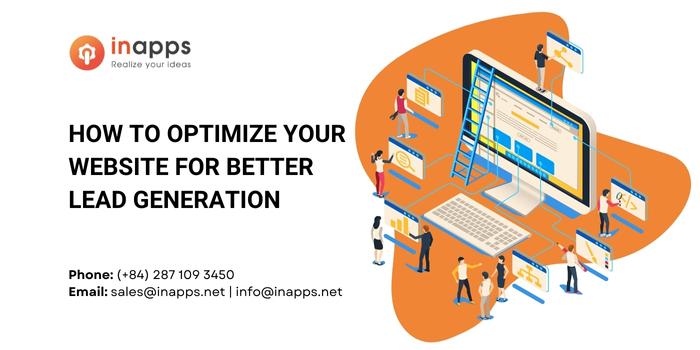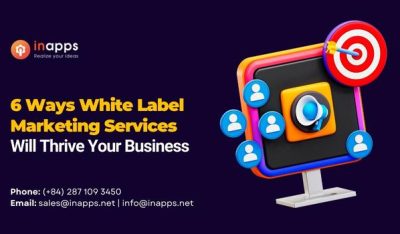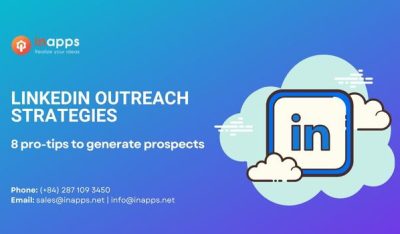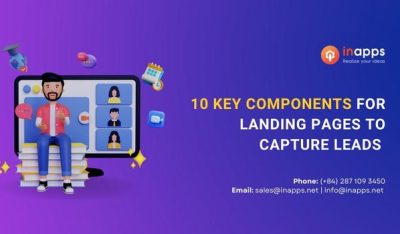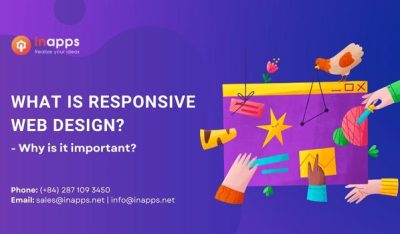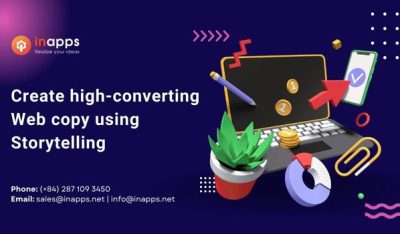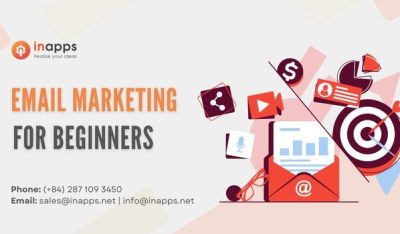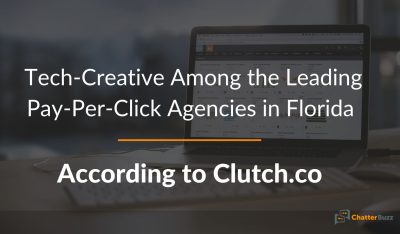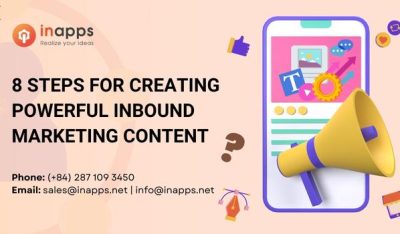- Home
- >
- Inbound Marketing
- >
- How to optimize your website for better lead generation
How to optimize your website for better lead generation is an article sent to you by the InApps editorial team. Hope readers will have more useful knowledge at www.inapps.net
Here’s a hard pill to swallow: Your website simply isn’t attracting many visitors. Sure, one or two leads drop in here and there… but that’s definitely not what you were expecting to see. If this is happening to you, then maybe it’s time to optimize your website.
Luckily, through digital marketing tactics such as Search Engine Optimization (SEO), you can organically attract more visitors to your page and get more hits on your website! But, before you can create a solid SEO strategy, you have to understand WHY your site is failing to attract leads in the first place.
In this article, you will learn:
- Why your website lacks traffic
- Why website optimization is so important
- How you can optimize your website for SEO & conversion
Are you ready to get down to the nitty-gritty of your website and finally resolve your traffic issues? Let’s get started!
4 Reasons Why People Aren’t Visiting Your Website
You set up a beautiful new website for your business and you have been excitedly waiting to see the leads pour in. After all, everyone told you that taking your brand online would generate more revenue!
But, there’s one problem: You are barely seeing any visitors! After putting so much time and money into building a website, this is a super disappointing situation. What gives?!
Well, to be frank, there could be several reasons why there is a lack of traffic to your site. Here are 4 top reasons why you aren’t seeing many visitors.
1. You Are Targeting the Wrong Leads
Whether you are a marketer or not, this is an extremely important step to achieve. You HAVE to know which group of people to target and then create content (such as your website copy and design) that resonates with them.
That’s right – it’s absolutely vital that you understand your audience and set your website up to revolve around them. If you do not get this step right, then you will either:
- Attract the wrong leads to your site (i.e. people who have little to no interest in your brand, services, and/or products)
- Gain very few (if any) visitors at all
So, how can you tell if this is the main problem you are facing?
Visitors Don’t Stay On Your Website Very Long

If you have a Google Analytics account or other website analysis tool, you can see how long your visitors stay on your website. It is estimated that a visitor should remain on your website for an average of 2-3 minutes to make it a good session.
If you notice that leads click in and out of your website rather quickly, then most likely they do not find value in your domain. Hence, you have either targeted the wrong group of people or your website needs to be updated to center around your niche. This leads us to our next point…
2. Your Website Lacks User Experience (UX)
Have you ever been interested in a brand and clicked on one of their promotional ads that direct you to their website… only to get stuck waiting for what seems like an eternity for their landing page to load? You eventually get annoyed and just click the X button.
Even though you are interested in what they have to offer, it’s no longer worth your time.
Sadly, this is a hard reality for many businesses out there. Their websites just take too long to load! Not to mention, when the visitor finally gets to the page, they are confronted with a difficult-to-navigate interface and hard-to-read copy that hurts their eyes.
This is known as a poor user experience (UX) and it can greatly affect the success of your website.
3. Your Website Does Not Have Quality Content
This next reason goes hand in hand with the other reasons we’ve mentioned above. If your website content is hard to connect with, then most likely visitors will not want to visit your website.
Low-quality content can come in many forms. Here are just a few examples of what might be causing traffic issues:
- A poor landing page that doesn’t convert
- Your website does not have good calls-to-action (CTAs)
- Blog content isn’t attracting the right readers, is poor quality, or you don’t have a blog at all
- Web copy is hard to understand or has grammatical errors
- You do not offer any (quality) incentives to visit your website and connect with your brand
The content you post on your website should be an integral part of your digital marketing strategy and should be optimized to properly reach your ideal visitors. Speaking of website optimization…
4. Your Website Is Not Optimized
If you do not have a solid SEO strategy and have not incorporated (the correct) SEO keywords into your website, then your website is not optimized. Therefore, you are more than likely lacking organic traffic and ranking poorly on search engines.

Why Website Optimization Is Your Secret Weapon
Picture this: Google, one of the most well-known search engines in the U.S., recognizes your business as a powerful industry leader because you consistently create and post stellar, SEO-proof web content that your visitors truly resonate with. Your website is so great that Google ranks you #1 for every related search your niche audience could possibly make.
Because of this coveted status, your website SKYROCKETS and you receive more exposure than ever! Wouldn’t that be amazing? So, how can you make this a reality?
Well, for starters, you have to optimize your website for SEO so that search engines and their search bots can start to recognize your domain. Over time, if your content is good (and, most importantly, better than the competitions’ content), then you will slowly start to climb in rank and pull in more organic traffic.
Keep reading to learn how to make website optimization your secret weapon.
How to Optimize Your Website for SEO & Conversion
In this next section, you will discover 5 key ways to optimize your website, including SEO keyword research, blog optimization, backlinks, and more. Let’s jump right in!
1. Understand Your Target Audience
In order to properly optimize your website, the first step is to identify your ideal lead. This is known as your target persona or your target audience.
As we mentioned before, understanding your niche market and creating content that attracts, connects, and inspires them is the key to successfully marketing your brand through your website.
If you haven’t done a deep dive into the ins-and-outs of your target audience, then you should start by conducting some research on your ideal visitor’s:
- Demographics
- Behavior patterns
- Pain points
- Wants, desires, and wishes
Once you have a better understanding of your audience, then you can set up your website to deliver in a way that better resonates with them.
2. Conduct Keyword Research for Your Website
Before you dive into keyword research, you might want to study up on important SEO terms such as long-tail keywords, anchor text, SEO titles, meta descriptions, and internal links.
Once you have a better understanding of these terms, you will have an easier time conducting SEO keyword research and strategically crafting content around these keywords.

Next, utilize keyword tools like SEMRush, Keywords Everywhere, and Moz Pro to help you with your research. These tools will show you the volume of people that search specific keywords and how much competition is out there to compete against if you decide to incorporate a specific keyword into your website.
Optimize for On-Page SEO
You can use keywords in every aspect of your website – from the landing page to each individual blog post. This is known as on-page SEO and it incorporates all of the keywords you use in your website’s headings, title tags, internal links, and more.
On-page SEO is important for any website to have and it can really improve the traffic and search visibility of your website.
3. Produce Valuable Content
When it comes to website optimization, content is key.
Here’s a good general rule you should follow for all of your marketing endeavors: The quality of your content reigns supreme over the quantity of content you produce.
That’s not to say you should limit the amount of content you produce. However, if you decide to put your content creation into overdrive, then you should also make sure you don’t sacrifice its QUALITY.
After all, your main focus should be on the value your content offers your readers, not the amount of ‘stuff’ you produce.
Create a Killer Blog
Blogs are a fantastic way to put your SEO strategy into full gear. You can even become an industry thought-leader who is recognized and supported by SEO bots through a well-crafted blog.

To jump-start your blog, think of inquiries your target audience might have about aspects of your brand, industry, etc. Then, create blog posts that answer these inquiries. Be sure to include SEO keywords in the SEO title, H1 title, meta description, slug, and introduction of each article!
4. Improve Overall UX
As we mentioned before, user experience can be a huge reason for the lack of website visitation. To improve your overall UX, start by taking a look at the ease of use of your website design.
- Is it easy to navigate through pages on your site?
- Is your web copy readable?
- Are your color scheme and font nice to look at?
- Are there any features that engage and interact with your visitors on your website?
Next, you can conduct A/B testing to see how well your website performs. Also, consider researching ways to speed up the load time on your web pages, so you don’t leave users hanging.
Make Your Website Mobile-Friendly
According to statistics, 50% of web traffic worldwide comes from mobile phones. With that being said, your website should be compatible with mobile devices, including iPhones and Androids!
When you optimize your website to be mobile-friendly, make sure you take a look at your website yourself from different types of mobile devices. Ask yourself questions such as:
- Does your copy get cut off?
- Is your navigation still working properly?
- Are images distorted?
- How fast is the load time?
- Can visitors still access incentives, internal links, buttons, and CTAs?
If all of these factors are in the clear, then you are good to go!
5. Attain Backlinks To Your Website
If you really want to optimize your website for SEO, then you need to obtain some backlinks to your website.

In essence, a backlink is a link from another person’s website to your website. When you externally link to another website, you are giving that domain a backlink. On the other hand, if they externally link to you, then you are receiving a backlink.
For example, if you have a super credible, high-ranking blog post, chances are another site will want to externally link to that post to improve their own credibility. In return, you receive a backlink!
Backlinks are super valuable because SEO bots instantly recognize that other websites are linking to your content and will most often boost your rank. And what’s more? The more backlinks you get, the more exposure you will generate!
Optimize Your Website Properly With InApps
Are you still having a hard time attracting visitors to your website? Don’t give up just yet! With our expert digital marketing strategists on your side, we will help you take your website to the next level.
At InApps, we have skilled SEO copywriters, A+ account managers, and experienced website optimizers who will get your website back on track. Contact us to claim a free website growth strategy session with one of our strategists!
Follow this to make sure you’ve got Why Isn’t Anyone Visiting My Website? Importance of Website Optimization. Save and share with those around you these extras.
To learn more about Inbound Marketing
Contact us:
www.inapps.net
List of Keywords users find our article on Google
[sociallocker id=”2721″]
| optimize your website for increased exposure – seo |
| “semrush content marketplace” |
| “semrush” “state of content marketing report” or “state of content marketing” or “state of content marketing report” or “content marketing” or “content study” |
| “semrush marketplace” |
| “semrush” seo or tools or keyword -“free subscription” |
| who is visiting my site |
| why is website optimization important |
| who is visiting my website |
| “semrush” “traffic analytics” or “market explorer” or “web traffic” or “market research” -jobs -careers |
| “semrush” keyword or “keyword research” or kmt or “magic tool” -career -jobs |
| “semrush persona” |
| “seo ab testing” |
| “semrush app center” |
| “content marketing” semrush or semrush or semrush or “sem rush” or semrash -jobs -vacancy |
| “semrush” linkbuilding or “build backlinks” or “backlink audit” or backlinks |
| “semrush” seo -jobs -resume |
| “semrush” seo or “digital marketing” or ppc -jobs -resume -employment |
| “semrush” avast or jumpshot or ahrefs or moz |
| “semrush” semrush or seo or sem or “digital marketing” -jobs |
| “search engine optimization” |
| semrush marketplace |
| “semrush” -jobs -band |
| “semrush” -jobs |
| “semrush” marketing or seo |
| “semrush” seo |
| “semrush” |
| optimize my website |
| digital niche marketing |
[/sociallocker]
Let’s create the next big thing together!
Coming together is a beginning. Keeping together is progress. Working together is success.




